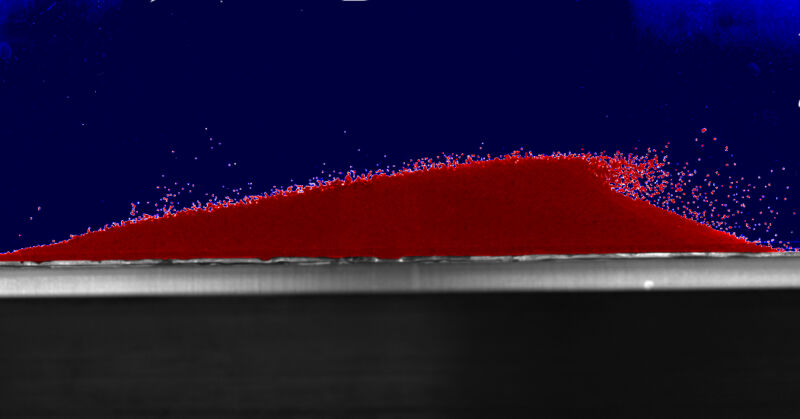
Enlarge / A red dune racing around an underwater track (credit: Karol A. Bacik)
Sand dunes are amazing. They sing, they move, they organize into regular structures—and then those structures can fall apart. Dunes can collide and combine into a single dune, and a single dune can break into multiple dunes. We are all familiar with pictures of dune fields in the desert, but you may not realize that the ripples of sand that are on the ocean floor are also dunes—just on a different scale. To test our understanding of sand dune models, physicists have been playing with underwater sandcastles. The result is that the models are OK but need work.
Building dunes
Dunes are not just a creation of sand; they are the result of a combined effort between free-flowing sand and a fluid (water or air) that moves it about. Understanding these dynamics involves a combination of modeling and measurement.
Yet the modeling is… challenging. A single dune involves too many particles to create a particle model, so researchers have come up with a short cut: they model dunes as autonomous blobs that can careen about the desert. As the dunes move and collide with each other, they exchange mass. Eventually, all the dunes end up with the same mass and move at the same speed, which results in regular structures, like we observe in dune fields and stream beds.
No comments:
Post a Comment